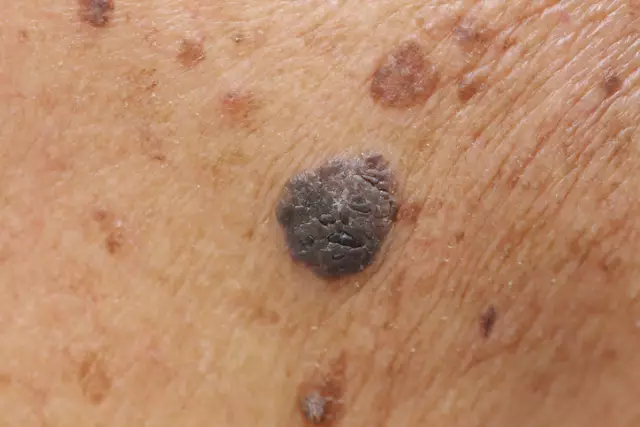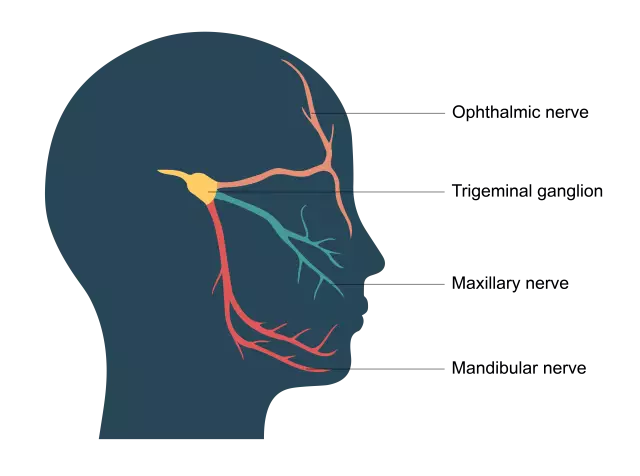Diseases
Last modified: 2025-11-02 20:11
Molluscum contagiosum in children is one of the most common forms of dermatosis. It is an infectious skin disease caused by a smallpox virus
Last modified: 2025-11-02 20:11
Coronary insufficiency is a condition that occurs when blood flow through the coronary arteries cannot meet myocardial energy and oxygen needs
Last modified: 2025-11-02 20:11
Measles in children is accompanied by intoxication, catarrhal inflammation of the mucous membranes of the upper respiratory tract and eyes, maculopapular rash
Last modified: 2025-11-02 20:11
Craniostenosis - a disease that occurs as a result of early overgrowth of the cranial sutures, leading to deformation of the skull and compression of the brain
Last modified: 2025-11-02 20:11
Strabismus in children is expressed in a violation of the position of the eyes, which is characterized by a deviation of one or both eyes from the central axis
Last modified: 2025-11-02 20:11
A red mole is a benign vascular tumor. The appearance of such moles does not depend on the age and gender of a person, they often occur even in babies
Last modified: 2025-11-02 20:11
For a long time, rubella was considered harmless. The fallacy of this judgment was proved only in the 40s of the century, and today rubella vaccination is included in the compulsory vaccination schedules
Last modified: 2025-11-02 20:11
Clubfoot in children is a common orthopedic disease caused by abnormal development of the foot and ankle
Last modified: 2025-11-02 20:11
Cretinism is a disease accompanied by impaired physical and mental development and arising from dysfunction of the thyroid gland
Last modified: 2025-11-02 20:11
Torticollis is a disease that manifests itself at a very early age. If untreated, it leads to rather serious consequences that can be avoided if you consult a doctor on time
Last modified: 2025-11-02 20:11
Rubella in children is a viral infection characterized by cutaneous manifestations, mild catarrhal syndrome and lymphadenopathy
Last modified: 2025-11-02 20:11
Bleeding is the most dangerous post-traumatic complication that threatens the life of the affected person. First aid is to stop bleeding and prevent significant blood loss
Last modified: 2025-11-02 20:11
Lichen planus is a chronic dermatosis characterized by the formation of small flat papules on the skin and / or mucous membranes with a shiny surface
Last modified: 2025-11-02 20:11
Urticaria in children is a common disease in pediatric practice, characterized by the appearance of skin rashes in the form of blisters, accompanied by itching
Last modified: 2025-11-02 20:11
Cryptorchidism is the failure of one or both of the testicles into the scrotum, or abnormal descent, in which the testicle is positioned under the skin in the groin, pubis, perineum, or thigh
Last modified: 2025-11-02 20:11
The croup is an acute lining laryngitis. It manifests itself at an early age in children under 5 years of age. Any acute viral respiratory disease causes inflammation and edema of loose adipose tissue. With severe manifestation of croup, death from asphyxia may occur
Last modified: 2025-11-02 20:11
Cerebral hemorrhage - a violation of cerebral circulation that occurs with injuries or pathologies of the vessels of the brain
Last modified: 2025-11-02 20:11
Croup in children is a syndrome that develops against the background of inflammatory diseases of the respiratory tract. Symptoms are hoarseness, shortness of breath, noisy breathing, and a barking cough
Last modified: 2025-11-02 20:11
Xanthelasma is a benign neoplasm that forms mainly on the skin of the eyelids against the background of lipid metabolism disorders
Last modified: 2025-11-02 20:11
Couperosis is a pathological condition characterized by the expansion and fragility of small vessels on the face
Last modified: 2025-11-02 20:11
Night blindness, or hemeralopia, is a violation of the mechanism of adaptation of vision to conditions of low light. The standard of treatment for essential night blindness is diet therapy
Last modified: 2025-11-02 20:11
Croupous pneumonia is an infectious-allergic pulmonary disease in which there is an inflammatory lesion of the lung tissue
Last modified: 2025-11-02 20:11
Obsession is a pathological condition when obsessive thoughts, sensations and experiences arise in the mind of a person without his desire
Last modified: 2025-11-02 20:11
Obsessive-compulsive disorder is characterized by the development of obsessive thoughts, memories and actions, as well as a variety of pathological fears
Last modified: 2025-11-02 20:11
Dehydration of the body consists in an insufficient amount of fluid, which negatively affects its work. Body tissues begin to lose water. Cell functions are impaired
Last modified: 2025-11-02 20:11
Airway obstruction in most cases is caused by a decrease or complete closure of the laryngeal lumen. This is the most common cause of acute respiratory failure, requiring emergency treatment
Last modified: 2025-11-02 20:11
Obturation is the closure of the lumen of a hollow organ or vessel with impaired patency due to a disease or artificially caused
Last modified: 2025-11-02 20:11
Sheep feces - one of the signs of constipation, which is manifested by the release of feces in the form of dense lumps
Last modified: 2025-11-02 20:11
Oligoasthenoteratozoospermia - a disease in which the concentration of sperm is halved
Last modified: 2025-11-02 20:11
A burn is tissue damage from exposure to excessive heat, electric current, radiation, or a chemical agent. Burn treatment can be conservative and surgical
Last modified: 2025-11-02 20:11
An eye burn is an injury to the anterior part of the eye that occurs as a result of excessive temperature, chemical or radiation exposure to the eye. Treatment is carried out in the ophthalmology department of the hospital
Last modified: 2025-11-02 20:11
Omphalitis is an inflammation of the navel, which is mainly found in newborns. In connection with the fashion for navel piercing, it has become common among adults
Last modified: 2025-11-02 20:11
Onychomycosis is a nail disease caused by a fungal infection. This pathology is very common, in total 10-20% of the world's population suffers from onychomycosis
Last modified: 2025-11-02 20:11
Obstructive bronchitis is an extensive inflammatory process in the bronchi, occurring against the background of bronchospasm and obstructed sputum discharge
Last modified: 2025-11-02 20:11
Oliguria - a decrease in the amount of urine excreted. This condition may be physiological, or it may indicate the presence of serious pathologies of internal organs
Last modified: 2025-11-02 20:11
Opisthorchiasis is an infection with parasitic worms of opisthorchis, in which the ducts of the pancreas, the liver and the gallbladder are affected. The only effective drug for the treatment of opisthorchiasis is Praziquantel
Last modified: 2025-11-02 20:11
Oophoritis is an inflammation of the ovary - a paired organ of the female reproductive system, the uterine (fallopian) tube connected to the uterus. Treatment of chronic oophoritis and acute is different
Last modified: 2025-11-02 20:11
Shingles is caused by the herpes simplex virus type 3 and only affects people who have had chickenpox. In the absence of adequate treatment, the disease causes serious complications
Last modified: 2025-11-02 20:11
The prolapse of the uterus is the displacement of the physiological border of the fundus and cervix below the anatomical position. It occurs when the muscles of the pelvic floor and uterine ligaments are weakened
Last modified: 2025-11-02 20:11
Orange feces are one of the symptoms of inflammation, diseases of the internal organs, or problems with the functioning of the digestive tract








































